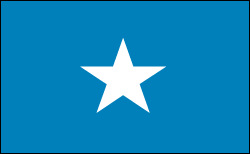Somalia History


Drought, Civil War and Anarchy
Africa's worst drought of the century occurred in 1992, and, coupled with the devastation of civil war, Somalia was plunged into a severe famine that killed 300,000. U.S. troops were sent in to protect the delivery of food in Dec. 1992, and in May 1993 the UN took control of the relief efforts from the U.S. The warlord Mohamed Farah Aidid ambushed UN troops and dragged American bodies through the streets, causing an about-face in U.S. willingness to involve itself in the fate of this lawless country. The last of the U.S. troops departed in late March, leaving 19,000 UN troops behind.
Since 1991 Somalia has been engulfed in anarchy. Years of peace negotiations between the various factions were fruitless, and warlords and militias ruled over individual swaths of land. In 1991, a breakaway nation, the Somaliland Republic, proclaimed its independence. Since then several warlords have set up their own ministates in Puntland and Jubaland. Although internationally unrecognized, these states have been peaceful and stable.
In Aug. 2000, a parliament convened in nearby Djibouti and elected Somalia's first government in nearly a decade. After its first year in office, the government still controlled only 10% of the country, and in Aug. 2003, its mandate expired. In Oct. 2002, new talks to establish a government began; in Aug. 2004 a 275-member transitional parliament was inaugurated for a five-year term. Parliament selected a national president in September, Abdullahi Yusuf Ahmed, the president of the breakaway region of Puntland. The new government, however, spent its first year operating out of Kenya—Somalia remained too violent and unstable to enter—eventually settling in the provincial town of Baidoa.
In May 2006, the country's worst outbreak of violence in 10 years began, with Islamist militias, called the Somali Islamic Courts Council (SICC), battling rival warlords. On June 6, the Islamist militia seized control of the capital, Mogadishu, and established control in much of the south. Somalia's transitional government, led by President Abdullahi Yusuf and situated in Baidoa, spent months engaged in unsuccessful peace negotiations with the Islamic Courts Council. In the meantime, neighboring Ethiopia, which has clashed in the past with Somalia's Islamists and considers them a threat to regional security, began amassing troops on the border. In mid-December, Ethiopia launched air strikes against the Islamists, and in a matter of days Ethiopian ground troops and Somali soldiers loyal to the transitional government regained control of Mogadishu. A week later most of the Islamists had been forced to flee the country. Ethiopia announced that its troops would remain in the country until stability was assured and a functional central government had been established, ending Somalia's 15 years of anarchy.







